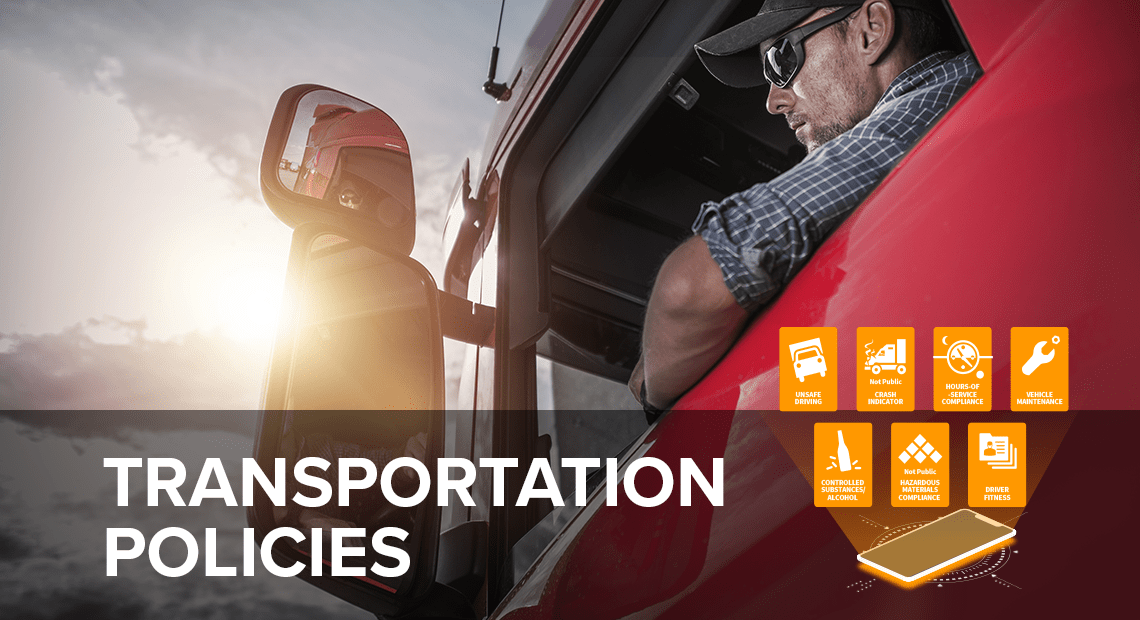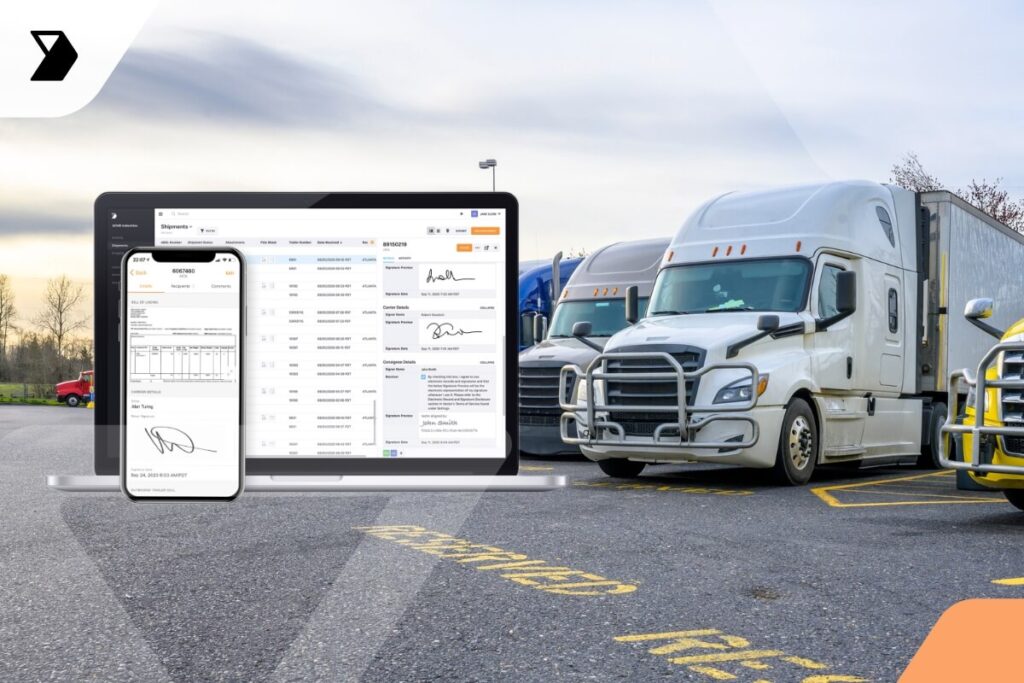CSA Scores: A Complete Guide to Managing Your CSA Score
June 5, 2020 In this post, I’ll be taking a deep dive into compliance, safety, and accountability scores. We call these CSA scores for short. We’ll investigate what a CSA score is and what’s a good number versus a bad number. I’ll also provide some information on how to find your CSA score. Finally, I’ll offer a detailed look at ways you can manage your CSA score. This information is vital to ensuring the smooth and positive flow of operations for your company. I’ll begin with explaining what a CSA score is and how it’s tabulated. Your CSA Score: What.
Ready to transform your supply chain?


In this post, I’ll be taking a deep dive into compliance, safety, and accountability scores. We call these CSA scores for short. We’ll investigate what a CSA score is and what’s a good number versus a bad number. I’ll also provide some information on how to find your CSA score. Finally, I’ll offer a detailed look at ways you can manage your CSA score. This information is vital to ensuring the smooth and positive flow of operations for your company.
I’ll begin with explaining what a CSA score is and how it’s tabulated.
Your CSA Score: What Is It?
Strictly speaking, there’s no such thing as a CSA “score.” However, the Federal Motor Carrier Safety Administration, or FMCSA, runs a CSA program. The FMCSA uses this program to assign carriers a percentile rank for safety, ranging from zero to 100. The common name for this is a CSA score.
The FMCSA issues these percentiles using its Safety Measurement System, or SMS for short. Then it organizes this SMS data into something called BASICs. BASICs are Behavior Analysis and Safety Improvement Categories.
Let’s take a closer look at these next.
What Are the BASICs?
The government tabulates CSA scores from SMS data collected monthly through roadside inspections and crash report data. As a carrier, you’ll receive a CSA score for each of the seven BASICs. Let’s take a look at what they are below.
- Unsafe driving: Your driver operates his or her vehicle in an unsafe manner. For example, the driver may be speeding, not wearing a seat belt, or committing one of many other driving violations.
- Driver fitness: This isn’t a referendum on your driver’s physical condition. Rather, it has to do with having proper qualifications—for example, failure to have a current, valid commercial driver’s license.
- HOS compliance: This means your driver fails to comply with the federal hours of service regulations. Drivers must maintain at least six months of records of duty status.
- Vehicle maintenance: This refers to your vehicle’s regular maintenance. For instance, maybe your driver improperly secured a load. Or maybe your equipment has parts that are obviously broken.
- Crash indicator: This is based on state-reported crash data. Your score takes into account the frequency and severity of incidents.
- Controlled substances/alcohol: Your driver is operating his or her truck while under the influence.
- Hazardous materials compliance: There has been unsafe handling of hazardous materials. This can include improper labels or negligent containment.
Your score in each BASIC accounts for some mitigating factors:
- Severity of the infraction
- How long ago the infraction occurred
- Annual vehicle miles traveled
Next, I’d like to take a quick trip into how the government applies this information and who it affects.
How Does the Government Apply CSA Scores?
Your CSA score, as a carrier, is exactly that: your CSA score. Drivers don’t have CSA ratings. Therefore, should a driver receive any kind of violation, that will be marked against you, the carrier, and not the individual driver. The government applies the scores directly, in conjunction with your DOT number. Your entire company and its scores depend on the quality, safety, and compliance of the drivers you employ.
What’s a Good Score, and What Does It Mean?
Now that you know what the FMCSA is rating for, you need to understand the rating you receive.
As mentioned previously, scores rank in a percentile ranging from zero to 100. However, the higher the score, the worse your rating. So, 100% is the worst possible score you can have. Obviously, you want to be as close to zero as possible.
There are several benefits to a low CSA score.
- Lower insurance premiums
- Fewer DOT audits
- Fewer roadside inspections
- Better reputation with current customers as well as potential future customers
What Does a Bad Score Mean?
Conversely, you’ll face a number of difficulties with bad scores. Here are just a few:
- Some insurance companies may not offer you coverage at all, regardless of premiums.
- Many customers will not do business with you based solely on your scores.
- The FMCSA may investigate your company and whether it can continue to operate.
I want to take a moment to expand on the last bullet point. Each BASIC has a score threshold where the FMCSA will step in and investigate your company. Here are the thresholds:
- Unsafe driving: 65% for general carriers, 60% for hazardous materials and passengers carriers
- Crash indicator: 65% for general carriers, 60% for hazardous materials and passengers carriers
- HOS compliance: 65% for general carriers, 50% for hazardous materials and passengers carriers
- All remaining categories: 80% for all carriers
These investigations can lead the government to suggest remedies to your company. However, they may also result in disciplinary action—including levying heavy fines or even shutting down your business.
So now comes the most important question: How do you improve on a negative score or maintain a positive score?
Managing and Improving Your Score
Fortunately, there are a number of proactive steps you can take to improve your CSA scores. Let’s look at each of the easiest ways to help place or maintain your company’s pathway on the straight and narrow.
Careful Hiring Process
Since your drivers are the ones ultimately responsible for the scores received in roadside inspections, hiring quality drivers with safe records is imperative. While drivers don’t have an individual CSA score, they do have their history reported to PSP, or the pre-employment screening program. According to Elizabeth Vather at Samsara, using PSP reports before hiring drivers has been proven to lower a company’s crash rate by 8% and its out-of-service violations by a whopping 17%. Furthermore, your drivers should be able to properly fill out paperwork and communicate effectively with DOT officers. Violations stemming from communication issues have risen over recent years and account for nearly 9% of all violations.
Training Programs and Modern Technology
Every employee, and your drivers in particular, should have training in proper safety procedures. You should also be checking in regularly to ensure they’re continuing to follow those procedures over time. One way you can continue to do this is through fleet management software. You can view dash cam footage and review driving analytics of your drivers. This allows you to monitor driver performance in real time and cumulatively.
Pre-Trip Inspection and Maintenance
Your drivers should naturally be doing a pre-trip inspection before every load. However, emphasizing the importance of these inspections can be paramount to salvaging your CSA score. You should place particular emphasis on lights, tires, and brakes. Of all roadside inspection violations, nearly 30% are for lights-related issues. Furthermore, tires account for 11% of roadside violations. Worse yet, each of these violations is significant. Should your driver receive a violation for lights, tires, or brakes, those are penalties of 6, 8, and 4 points respectively. For reference, singular violations are on a 10-point scale.
This is yet another area where modern technology can help. Effective fleet management software can help you maintain a preventive maintenance program.
Fighting Back Against Violations
Finally, it’s important to know that receiving a citation isn’t necessarily a death knell. Carriers have two years in which to challenge any violation that harms their CSA score. If you have evidence that exonerates a driver from a violation, you can file a protest. If you win your challenge, the government will remove the violation and the points that come with from your CSA score.
Furthermore, even if you know a violation happened, you may challenge the severity of the citation issued. In the event you win a challenge of severity, you may receive a lesser penalty to help your overall score.
This is yet another area where the cost of fleet management software is justifiable. It can be of vital assistance. Dash cams and tracking systems can provide the necessary evidence to exonerate your driver from a citation.
Putting It Together
CSA scores are obviously extremely important. Your company needs to operate safely and in compliance with federal guidelines. More than that, you want to have a profitable company. Taking the proper steps to ensure your successful management of CSA scores will help you do exactly that. From lower insurance premiums to fewer unexpected maintenance costs to the smoother acquisition of new customers, you can have plenty of positive cash flow opportunities for the future.
This post was written by Matthew Zandstra. Matt has been working in transportation and logistics dispatch for the past six years, both as a broker and direct to drivers. He’s familiar with various facets of relationships, technical systems, pricing mechanics, and commodities.
Ready to transform your supply chain?
Increase efficiency and productivity. Say goodbye to delays, handwriting errors, and time-intensive manual data entry.



